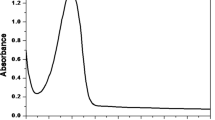Abstract
Determination of diamine oxidase (DAO) activity in rat liver preparations by measuring the formation of radioactive δ1-pyrroline from14C-putrescine is complicated by the complexity of competing metabolic pathways. This can lead to complete masking of the DAO activity present when rat liver homogenates are used as the enzyme source. However, subcellular fractionation of rat liver homogenates makes it possible to detect some putrescine oxidizing activity in the microsomal fraction when assayed at pH 8.5. When 1 mM putrescine was used as the substrate, over 90% of this activity was inhibited by 6×10−4 M selegiline (deprenyl), indicating that monoamine oxidase (MAO) rather than DAO activity was being measured. The observed activity was also interfered with by agents that reduced acetylation processes and polyamine synthesis. A different picture appears when μM concentrations of putrescine are used: in these conditions all interference is strongly reduced and DAO activity can be measured in rat liver microsomes. Furthermore, kinetic studies on deaminative oxidation of14C-putrescine at concentrations from 1 μM to 5 mM confirm the existence of two enzymes: one with a high affinity for the substrate and similar to intestinal mucosa DAO in its sensitivity to α-aminoguanidine, and the other one with a low affinity and selegiline-sensitive.
Similar content being viewed by others
References
M. P. Argento-Cerù and F. Autuori,Localization of diamine oxidase in animal tissue. InStructure and Function of Amine Oxidases. (Ed. Mondovì B.) pp. 89–104, CRC Press, New York 1985.
F. Buffoni, G. Ignesti, R. Pirisino and C. Cortesini,Glutamate-oxaloacetate transaminase, monoamine oxidase, diamine oxidase and mixed function oxidase activities in rat liver after portocaval shunt. Pharmacol. Res. Commun.14, 771–777 (1982).
A. Sessa, M. A. Desiderio, M. Baizini and A. Perin,Diamine oxidase activity in regenerating rat liver and in 4-dimethyl-aminoazobenzene-induced and Yoshida AH130 hepatomas. Cancer Res.41, 1929–1934 (1981).
A. Perin, A. Sessa and M. A. Desiderio,Response of tissue diamine oxidase activity to polyamine administration. Biochem. J.234, 119–223 (1986).
J. Kusche, H. Richter, R. Hersterberg, J. Schmidt and W. Lorenz,Comparison of the 14 C putrescine assay with the NADH test for the determination of diamine oxidase: Description of a standard procedure with a high precision and improved accuracy. Agents and Actions3, 148–156 (1973).
W. A. Fogel, T. Bieganski, J. Wozniak and C. Maslinski,Interference of aldehyde metabolising enzymes with diamine oxidase/histaminase/activity as determinated by 14 C putrescine method. Biochem. Pharmacol.27, 1139–1162 (1978).
N. Seiler,Acetylpolyamines as substrates of amine oxidase. In:Structure and Function of Amine Oxidase (Ed. B. Mondovì) pp. 21–36, CRC Press, New York 1985.
G. Ignesti, M. Perreti and F. Buffoni,Induction and quail liver diamine oxidase (histaminase). Part 1: Interference of spermidine synthase on the diamine oxidase activity assay using putrescine as substrate. Agents and Actions25, 37–42 (1988).
S. Beninati, M. Piacentini, M. P. Argento-Cerù, S. Russo-Caia and F. Autuori,Presence of di- and polyamines covalently bound to protein in rat liver. Biochim. Biophys. Res. Commun.841, 120–126 (1985).
G. Ignesti, G. Banchelli, L. Raimondi, R. Pirisino and F. Buffoni,Histaminase activity in rat lung in comparison with intestinal mucosa diamine oxidase. Agents and Actions35, 193–199 (1992).
O. H. Lowry, N. J. Rosebrough, A. L. Farr and R. G. Randall,Protein measurement with the Folin phenol reagent. J. Biol. Chem.193, 265–275 (1951).
G. Spears, J. G. T. Sneyd and E. G. Loten,A method for deriving kinetic constants for two enzymes acting on the same substrate. Biochem. J.125, 1149–1151 (1971).
W. H. Press, B. P. Flannery, S. A. Teukolsky and W. T. Vetterling, Numerical Recipes in C, pp. 542–547, Cambridge Press, Cambridge 1988.
R. J. Murphey and E. W. Gerner,Hypusine formation in protein by a two-step process in cell lysate. J. Biol. Chem.262, 15033–15036 (1987).
P. J. A. Davies, A. Chiocca, J. P. Basilion, S. Poddar and J. P. Stein,Transglutaminases and their regulation: Implications for polyamine biosynthesis. Adv. Expt. Biol. Med.250, 391–401 (1988).
V. Z. Gorkin,Qualitative alterations in enzymatic properties of amine oxidases. Adv. Biochem. Psychopharmacol.5, 55–65 (1972).
P. R. Libby,Acetylspermidine deacetylase. Meth. Enzymol.94, 329–331 (1983).
Author information
Authors and Affiliations
Rights and permissions
About this article
Cite this article
Ignesti, G., Banchelli, G., Pirisino, R. et al. Some problems with the diamine oxidase (DAO) assay using putrescine as substrate in rat liver. Agents and Actions 39, 6–12 (1993). https://doi.org/10.1007/BF01975707
Received:
Accepted:
Issue Date:
DOI: https://doi.org/10.1007/BF01975707




